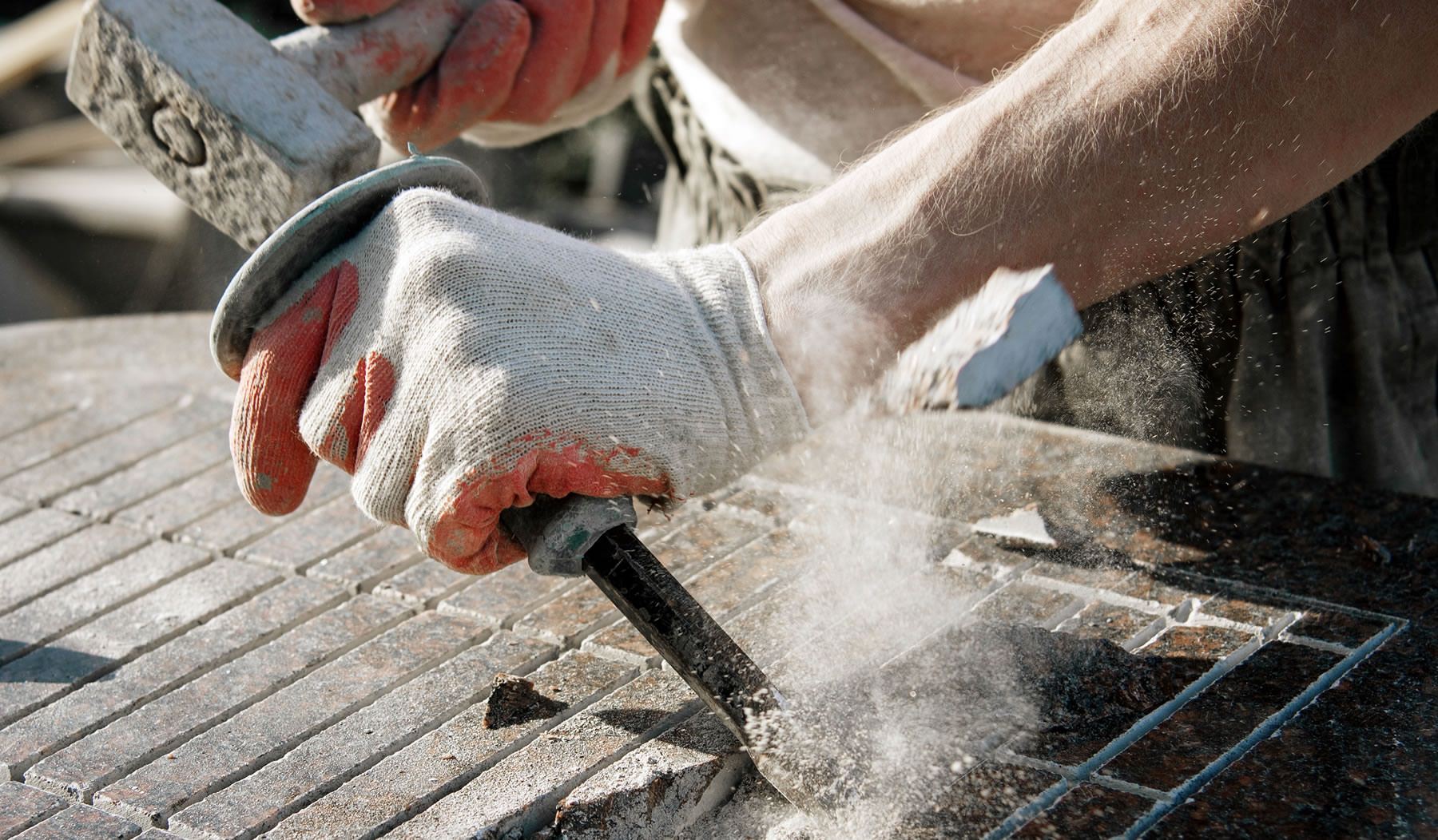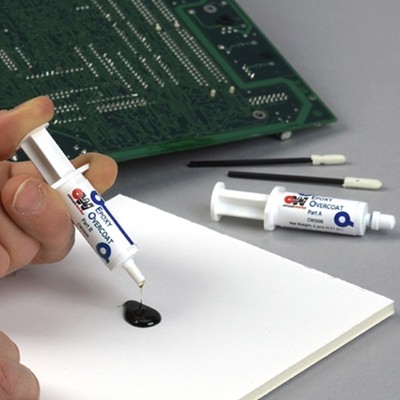In technical support, we receive calls almost every week asking how to dissolve conductive bonds made with CircuitWorks Conductive Epoxy (part #CW2400). The best advice I can give is to physically remove the cured material by sanding, scraping or chipping the epoxy away. Unfortunately, we have no product in our line that will rapidly dissolve cured epoxy resin. Solvent products on the market that claim to dissolve cured epoxies can actually cause more problems than they solve.
Removing uncured epoxies, like CircuitWorks Conductive Epoxy, presents no special problems. Straight solvents such as acetone, methyl ethyl ketone (MEK) and methylene chloride (dichloromethane), will quickly dissolve the uncured paste. Make sure you handle these carefully with proper PPE (personal protection equipment) and ventilation, because they are flammable or carcinogenic.
Chemtronics offers several safer options: Electro-Wash Two-Step, Electro-Wash MX, Flux-Off Heavy Duty and Flux-Off Aqueous. They can be used to remove uncured epoxy from printing stencils and circuit boards, by either wiping or immersion in a heated dip-tank, or ultrasonic bath.
Removing cured conductive epoxy is a different matter. Epoxies are meant to be permanent bonding compounds. They are designed to hold securely to surfaces, while exhibiting extremely good chemical resistance, heated strength, and high abrasion resistance. A cured epoxy will be very resistant to attack by solvents over a short period of time (hours), and even for much longer periods of time (hours to days). And that solvent may damage more than the intended target. This is why we recommend that the hardened epoxy be removed by physical means.
There are some products on the market that claim to dissolve cured epoxy resins, and a quick search of the Internet will tum up a number of companies that sell such products. All of these products rely on very strong chemicals, such as methylene chloride, n-methyl pyrrolidone (NMP) and organic acids, to name a few, which are extremely toxic (methylene chloride is a cancer-causing agent), have very unpleasant odors, or are otherwise hazardous to use.
In most cases, depending on the type of epoxy you’re dealing with, these products must be heated for them to work well. Many are combustible and present flammability problems when heating them to temperatures near their flashpoints. Even when heated, these products may take hours or days to dissolve the cured epoxy. In many cases, complete dissolution is not even possible, so the best that can be achieved is a softening of the epoxy which then still requires physical removal.
Simple "5 minute epoxies" can sometimes be softened by covering them with a cloth soaked in acetone, MEK or methylene chloride, them wrapping the cloth with plastic wrap or another material to retard evaporation of the solvent. The cloth must be kept wetted with the solvent. The epoxy will usually swell and soften and can then be removed fairly easily by scraping.
One must also consider the materials the epoxy is bonded to if using an "epoxy dissolver". In the case of CircuitWorks Conductive Epoxy, the epoxy is usually applied directly to the surface of a circuit board. Circuit boards are made up of layers of phenolic resin-impregnated paper or epoxy resin-impregnated glass cloth (fiberglass). Any solvent that would successfully attack the cured conductive epoxy will also attack the resins that make up the circuit board, resulting in de-lamination or separation of the layers in the board. These strong solvents will also attack some metals, such as aluminum, which must be factored if the epoxy adheres to metal.
Because of all the complications of exposure time, temperature, toxicity and poor final result (softening, not dissolving), we still consider physical removal (i.e., sanding, scraping, chipping) the best and safest way to remove cured conductive epoxy. If the conductive bond to be made is not intended to be permanent, it is best to use another conductive product, such as the CircuitWorks Conductive Pen (CW2200MTP, CW2200STP), or the CircuitWorks Conductive Grease (CW7100), or solder the pieces together to achieve electrical contact.
However, if the surface is metal or glass, one more option exists to remove CircuitWorks Conductive Epoxy. Heat the epoxy residue with a soldering iron set to 500-600°F. The epoxy will soften and lose adhesion and can then be easily scraped off. Again, this removal method can be used on metal, glass or any surface that will not be adversely affected by high temperatures, which would not be PCB material. The high temperatures involved would melt most plastics and can damage circuit boards by leaving an unsightly burned spot or causing the board to de-laminate.
Mistakes happen, but there are options to remove epoxy, albeit limited ones. If you have any questions, please contact us at 770-424-4888 or [email protected].





